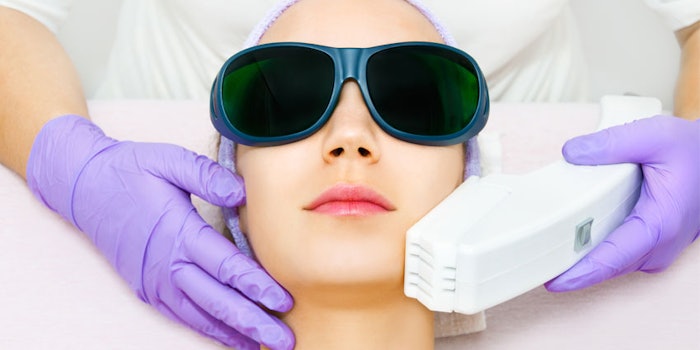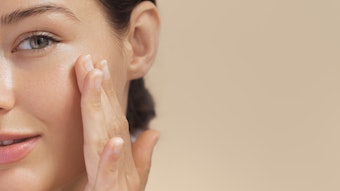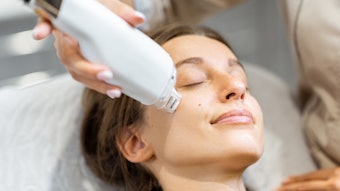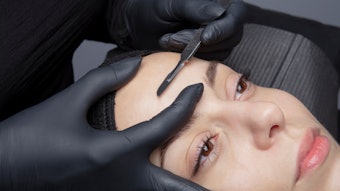
Just like televisions and mobile phones, medical spa procedures evolve to become higher tech and more affordable. This is certainly the case for lasers and energy devices, which include non-ablative and fractionated resurfacing, radiofrequency and focused ultrasound.
Heightened Awareness
Lasers and energy devices have seen an increase in popularity in the past decade due to a combination of minimal downtime, marketing and greater consumer awareness, according to Mitchel Goldman, M.D., founder and medical director of Cosmetic Laser Dermatology in San Diego.
“In the past, consumers had no idea what lasers could accomplish, and the truth is, physicians didn’t have that big of an idea either,” said Goldman, who has done pioneering research on multiple laser techniques and skin rejuvenation. “And now with increased marketing to physicians as well as increased social media presence, that’s where it’s all coming from.”
Goldman predicts a custom blend of modalities will be the wave of the future.
"...now with increased marketing to physicians as well as increased social media presence, that’s where [the interest of laser treatments] is all coming from." —Mitchel Goldman, M.D.
Louis Silberman, founder and president of the National Laser Institute, adds that affordability and competent treatment providers are also driving demand.
“Due to technology becoming more affordable over the years, what used to cost the consumer $1,000 is now $250; therefore, it’s become a commodity that most can afford,” he said. “Remember when an iPhone was $800? Now, one can get a 5c iPhone for $100, and we all have one.”
Increased Efficacy
Vaginal rejuvenation is a procedure that has seen a steep increase in consumer demand. Modalities like ThermiVa use radiofrequency technology to gently heat the surrounding tissue, creating a tightening effect. However, Goldman notes that vaginal rejuvenation patients see benefits far beyond esthetics.
“In a study that we are presenting at the American Society for Laser Medicine and Surgery, we’ve proved that not only do you get tightening and really nice results, but you also get things like a decrease in urinary incontinence,” he said. “There’s something real physiologically and anatomically that we’re accomplishing besides just making the labia smaller and the vagina a little tighter.”
The ideal patient for laser and light source procedures are healthy individuals with Fitzpatrick skin types I - IV, according to Silberman. Darker skin types do well with a specific 1064 laser for hair reduction and radiofrequency for skin rejuvenation.
“There are real things that are happening. It’s not a placebo.” —Mitchel Goldman, M.D.
The efficacy of lasers and light sources has increased substantially in the past decade, in some cases cutting the treatments in half. Tattoo removal, for example, which uses picosecond laser pulses to permanently remove tattoo pigment, could have required 20 treatments in previous years, but now may only require 10.
The same holds true for patients seeking treatment for hyperpigmentation; however, just like tattoo removal, treatment depends on severity.
The Future of Lasers and Energy Devices
“The truth is if I could have one thing on my tombstone, it would be ‘He cured melasma,’ because it’s such a difficult problem,” said Goldman. “I had thought that these expensive picosecond lasers would be the answer, but they’re not.”
Instead, Goldman and his team have found using a combination of modalities, such as a light source plus a topical or chemical treatment, to be more effective than a laser treatment alone.
“It’s knowing when to combine that $200,000 laser with other topical skin care products and other products that the laser can interact with to make it more effective.” — Mitchel Goldman, M.D.
“I’m working with a company called Sienna Labs that has what are called nanotubes, which we rub into the skin and it goes into the hair follicles and oil glands,” he said. “We can use those very same lasers, which can now target the nanotubes and make the laser more effective.”
Goldman predicts this custom blend of modalities will be the wave of the future.
“It’s not just buying a $200,000 laser that can treat everything,” he said. “It’s knowing when to combine that $200,000 laser with other topical skin care products and other products that the laser can interact with to make it more effective.”










